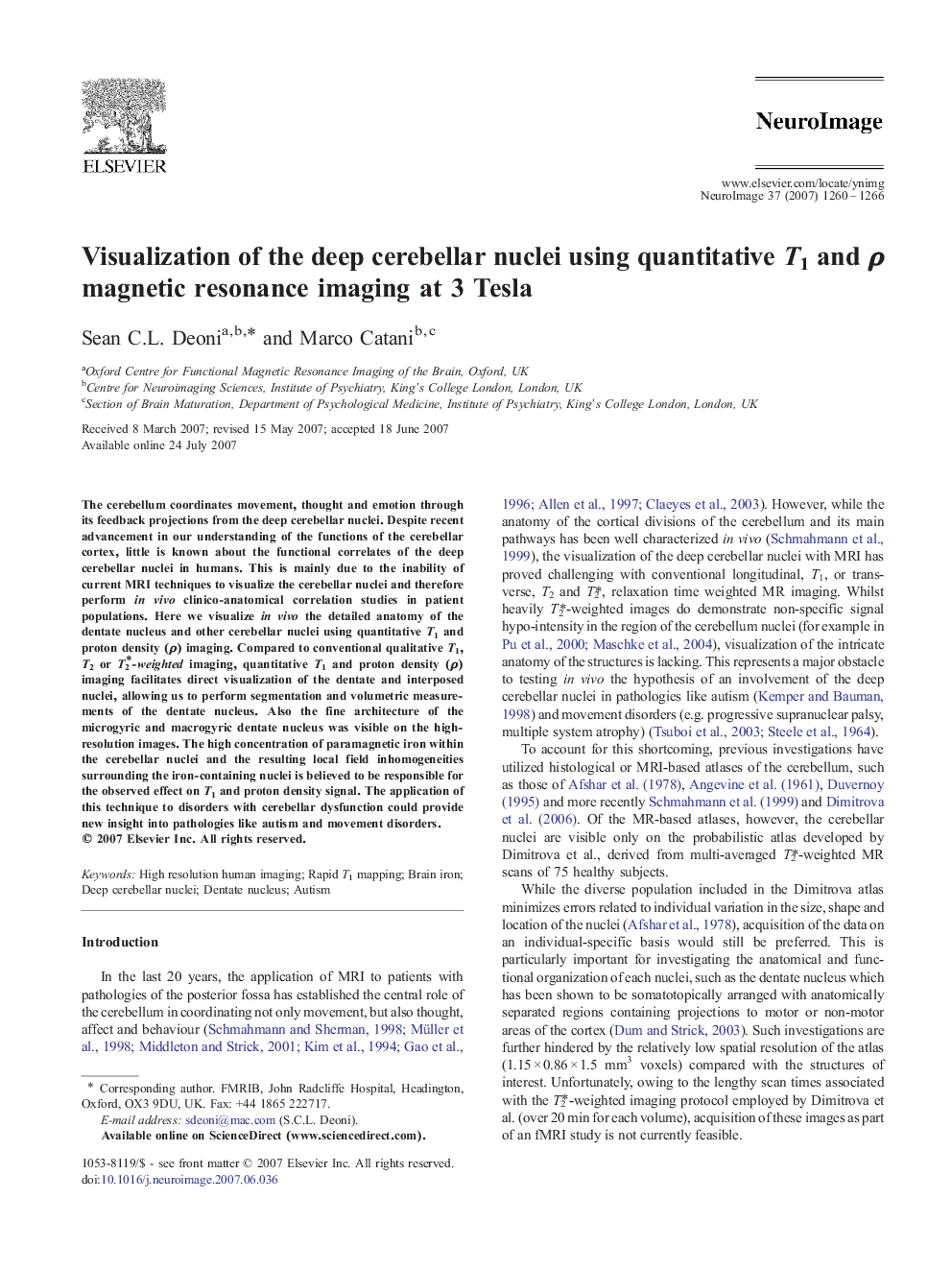| Article ID | Journal | Published Year | Pages | File Type |
|---|---|---|---|---|
| 3073496 | NeuroImage | 2007 | 7 Pages |
The cerebellum coordinates movement, thought and emotion through its feedback projections from the deep cerebellar nuclei. Despite recent advancement in our understanding of the functions of the cerebellar cortex, little is known about the functional correlates of the deep cerebellar nuclei in humans. This is mainly due to the inability of current MRI techniques to visualize the cerebellar nuclei and therefore perform in vivo clinico-anatomical correlation studies in patient populations. Here we visualize in vivo the detailed anatomy of the dentate nucleus and other cerebellar nuclei using quantitative T1 and proton density (ρ) imaging. Compared to conventional qualitative T1, T2 or T2⁎-weighted imaging, quantitative T1 and proton density (ρ) imaging facilitates direct visualization of the dentate and interposed nuclei, allowing us to perform segmentation and volumetric measurements of the dentate nucleus. Also the fine architecture of the microgyric and macrogyric dentate nucleus was visible on the high-resolution images. The high concentration of paramagnetic iron within the cerebellar nuclei and the resulting local field inhomogeneities surrounding the iron-containing nuclei is believed to be responsible for the observed effect on T1 and proton density signal. The application of this technique to disorders with cerebellar dysfunction could provide new insight into pathologies like autism and movement disorders.
